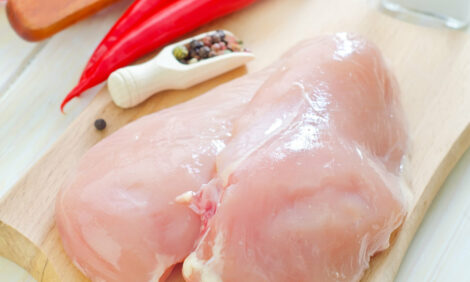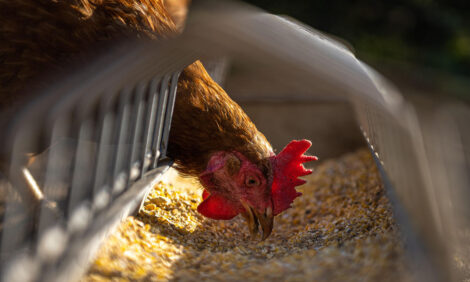



Dynamic Filtration Research Seeks to Improve Poultry Wastewater Treatment Processes
Improved primary screening of poultry wastewater offers ample opportunity for reducing overall wastewater costs, according to a research team at Georgia Tech Research Institute.Similar to in-plant practices (such as dry sweeping) that are designed to keep material out of the drain, screening is a physical process with the goal of getting gross solids out of the liquid stream discharged from the processing plant to wastewater. If successful, a smaller range of particle sizes can then be removed by follow-on processes such as chemically enhanced dissolved air flotation or biological processes.

Researchers at the Georgia Tech Research Institute (GTRI) have been addressing methods to improve solids separation performed by primary and secondary mechanical screens with a current research focus on 0.01-inch (approximately 300 micron) and smaller sieve sizes. One challenge is that poultry processing wastewater contains high amounts of suspended solids, biochemical oxygen demand and floatable materials including fats, oils and grease (FOG).
"We have considered options that focused on individual sources of wastewater as well as the combined stream presented to the mechanical screens," says John Pierson, principal research engineer and project director. "We are considering incorporating a variety of methods to maintain screens in real-time by keeping the openings clear of debris. This also includes examining techniques used in more traditional filters and membranes such as transmembrane pressure and shear."
| Table 1. Wastewater screening choices | |
|---|---|
| Parameter | Options |
| Opening size | Coarse, medium, fine (microstraining) |
| Configuration | Racks, bar screens, mesh |
| Method for cleaning | Manually or mechanically raked, spray |
| Surface movement | Static, moving (drum, disc, belt, shaker, gyratory) |
| Loading rate | Volume per area (gal/ft; or ft3 / ft2 ; or m3 / m2 ) |
| Feeding | Internally or externally |
Dr Pierson notes that screens used in poultry processing typically are internally fed rotating drums with fine openings that are constantly sprayed (see Table 1). While these systems are not enclosed such that pressure can be used to increase the flux or volume passed, researchers are examining designs that better facilitate pressure and shear for surface cleaning, as well as for other solids separations opportunities using microstrainers (finer mesh sizes).
"Our efforts continue to consider ways to move technologies forward for enabling water reuse and recycling, because we know that continues to be a goal for the poultry industry, particularly with the industry’s evolving focus on corporate social responsibility and sustainability," says Dr Pierson.
In the United States, he explains, regulatory requirements for water reuse are listed in 9 CFR 416.2(g), and the USDA's Food Safety and Inspection Service (FSIS) has issued compliance guidelines to provide in-depth assistance with respect to specific water reuse applications. An ongoing challenge is developing cost-effective technologies that achieve needed physical, chemical or micro-biological improvements in reuse water.
"For us, the dynamic aspect of our filtration research is about ensuring particles are stopped before the filter and removed as quickly and cost-effectively as possible," says Dr Pierson.
January 2013








